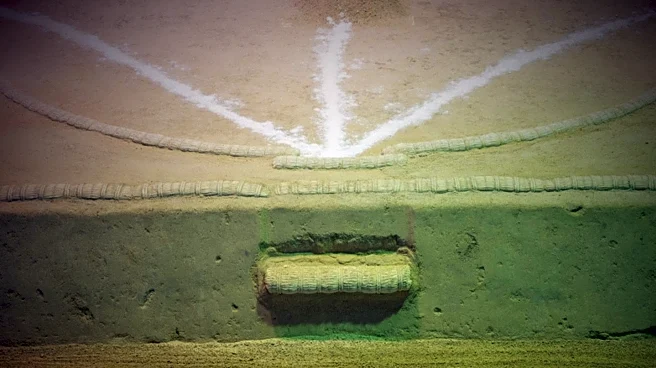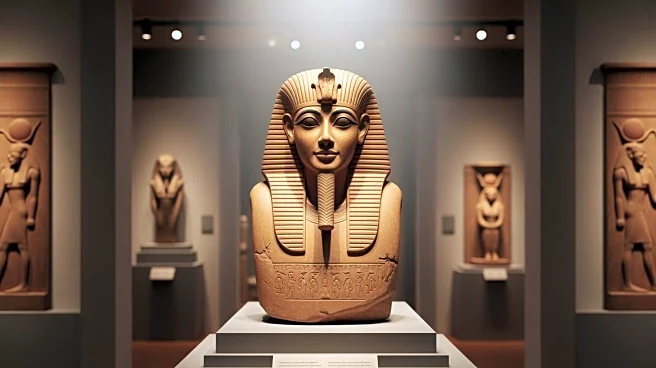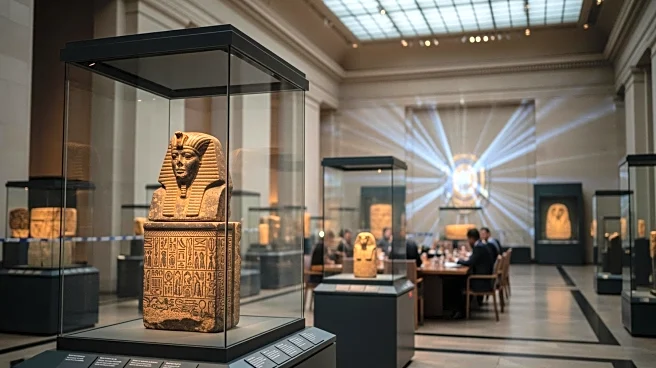What's Happening?
Researchers from Cairo University and the Technical University of Munich have discovered two hidden voids within the Pyramid of Menkaure in Giza, Egypt. Using non-destructive imaging techniques, the ScanPyramids
project identified air-filled cavities behind the pyramid's eastern facade. These findings may indicate the presence of a lost entrance to the tomb of King Menkaure, built around 2510 BC.
Why It's Important?
The discovery of hidden voids in the Pyramid of Menkaure could provide new insights into ancient Egyptian construction techniques and burial practices. It may also help solve longstanding mysteries about the pyramid's design and purpose. This research contributes to the broader field of archaeology and the understanding of ancient civilizations, potentially leading to further exploration and preservation efforts.
What's Next?
Researchers plan to continue their investigations using advanced imaging methods to explore the pyramid's interior without causing damage. The findings may lead to new archaeological studies and collaborations aimed at uncovering more secrets of the Giza pyramids. The project could inspire similar efforts to study other ancient structures worldwide.
Beyond the Headlines
The use of non-destructive testing techniques in archaeology highlights the importance of preserving cultural heritage while advancing scientific knowledge. The discovery may prompt discussions about the ethical considerations of exploring and potentially altering historical sites.












